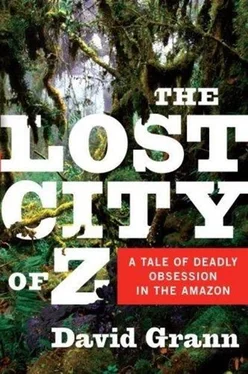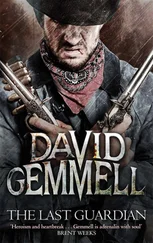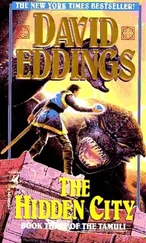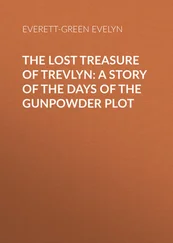I could never have made it out of the jungle without my wonderful and good-humored guide, Paolo Pinage. I am also grateful to the Bakairí, Kalapalo, and Kuikuro Indians for welcoming me into their settlements and talking to me not only about Fawcett but their own rich cultures and history as well.
To learn about Amazonian archaeology and geography, I drew on the wisdom of several scholars-Ellen Basso, William Denevan, Clark Erick-son, Susanna Hecht, Eduardo Neves, Anna Roosevelt, and Neil White-head, among them-though they should not be held accountable for my words. I would like to pay special tribute to James Petersen, who was murdered in the Amazon not long after we spoke, depriving the world of one of its finest archaeologists and most generous souls. And, needless to say, this book would have had a much different ending had it not been for the archaeologist Michael Heckenberger, a brilliant and fearless scholar who has done so much to illuminate the ancient civilizations of the Amazon.
William Lowther, Misha Williams, and Hermes Leal have all done prodigious research on Fawcett and patiently answered my questions.
In the United States, several terrific young journalists assisted me at various stages as researchers, including Walter Alarkon, David Gura, and Todd Neale. In Brazil, Mariana Ferreira, Lena Ferreira, and Juliana Lottmann helped me to track down a host of documents, while in England Gita Daneshjoo volunteered to retrieve an important paper. Nana Asfour, Luigi Sofio, and Marcos Steuernagel contributed first-rate translations; Ann Goldstein deciphered an ancient Italian script. Andy Young was an amazing help both with fact-checking and with Portuguese translations. Nandi Rodrigo was an industrious fact-checker and made wonderful editorial suggestions.
I can never thank enough Susan Lee, a remarkable young journalist who has worked on this project as a reporter, researcher, and fact-checker for months on end. She embodies all the best qualities of the profession- passion, intelligence, and tenacity.
Many friends came to my aid, lending their editorial insights while pushing me across the finish line. I especially want to thank Burkhard Bil-ger, Jonathan Chait, Warren Cohen, Jonathan Cohn, Amy Davidson, Jeffrey Frank, Lawrence Friedman, Tad Friend, David Greenberg, Raffi Khatchadourian, Larissa MacFarquhar, Katherine Marsh, Stephen Metcalf, Ian Parker, Nick Paumgarten, Alex Ross, Margaret Talbot, and Jason Zengerle.
It is also my good fortune to be surrounded by such talented editors at The New Yorker. Daniel Zalewski is one of the smartest and most gifted editors in the business, and painstakingly edited the piece that appeared in the magazine and then made invaluable contributions to the book. Dorothy Wickenden, who took the manuscript even on her vacation, provided her usual scrupulous edits and flourishes, improving the text immeasurably. Elizabeth Pearson-Griffiths is one of those editors who quietly make each writer they work with better, and every page benefited from her infallible eye and her ear for language. And I can never fully express my gratitude to David Remnick, who agreed to send me into the jungle in pursuit of Z and who, when the project began to grow and envelop my life, did everything he could to ensure that I finished it. This book would not have happened without him.
Kathy Robbins and David Halpern at the Robbins Office and Matthew Snyder at CAA are more than great agents; they are sage advisors, fierce allies, and, most of all, friends. I also want to thank everyone else at the Robbins Office, especially Kate Rizzo.
One of the best things in writing this book has been the opportunity to work with the extraordinary team at Doubleday. William Thomas has been what every book author dreams of finding: an incisive and meticulous editor as well as indefatigable champion, who has given everything to this project. Stephen Rubin, who ushered this book from its inception to its publication, has done so with his indomitable spirit and wisdom. Indeed, the entire team at Doubleday-including Bette Alexander, Maria Carella, Melissa Danaczko, Todd Doughty, Patricia Flynn, John Fontana, Catherine Pollock, Ingrid Sterner, and Kathy Trager-has been a marvel.
In John and Nina Darnton, I have not only perfect in-laws but also first-rate editors. My sister, Alison, along with her family, and my brother, Edward, have been a constant source of encouragement. So has my mother, Phyllis, who has been an amazing writing tutor over the years. My father, Victor, not only has supported me in every way but continues to show me the wonders of an adventurous life.
I hope that one day my son, Zachary, and my daughter, Ella, who was born after my trip, will read this book and think that perhaps their father wasn’t such an old bore after all. Finally, I want to thank my wife, Kyra, who has given to this book more than words can describe, and is, and will always be, everything to me. Together, she, Zachary, and Ella have provided the most rewarding and unexpected journey of all.
DESPITE FAWCETT’S once-enormous fame, many details of his life, like those of his death, have been shrouded in mystery. Until recently, Fawcett’s family kept the bulk of his papers private. Moreover, the contents of many of the diaries and correspondence of his colleagues and companions, such as Raleigh Rimell, have never been published.
In trying to excavate Fawcett’s life, I have drawn extensively on these materials. They include Fawcett’s diaries and logbooks; the correspondence of his wife and children, as well as those of his closest exploring companions and his most bitter rivals; the journals of members of his military unit during World War I; and Rimell’s final letters from the 1925 expedition, which had been passed down to a cousin once removed. Fawcett himself was a compulsive writer who left behind an enormous amount of firsthand information in scientific and esoteric journals, and his son Brian, who edited Exploration Fawcett, turned out to be a prolific writer as well.
I also benefited from the tremendous research of other authors, particularly in reconstructing historical periods. I would have been lost, for instance, without John Hemming’s three-volume history on the Brazilian Indians or his book The Search for El Dorado. Charles Mann’s 1491, which was published not long after I returned from my trip, served as a wonderful guide to the scientific developments that are sweeping away so many previous conceptions about what the Americas looked like before the arrival of Christopher Columbus. I have listed these and other important sources in the bibliography. If I was especially indebted to a source, I tried to cite it in the notes as well.
Anything that appears in the text between quotation marks, including conversation in the jungle from vanished explorers, comes directly from a diary, a letter, or some other written document and is cited in the notes. In a few places, I found minor discrepancies in the quotations between published versions of letters, which had been edited, and their original; in these cases, I reverted to the original. In an effort to keep the notes as concise as possible, I do not include citations for well-established or uncontroversial facts, or when it is clear that a person is speaking directly to me.
ARCHIVAL AND UNPUBLISHED SOURCES
Alabama Department of Archives and History, ADAH
American Geographical Society, AGS
Costin Family Papers, private collection of Michael Costin and Mary Gibson
Fawcett Family Papers, private collection of Rolette de Montet-Guerin
Fundação Biblioteca Nacional, Rio de Janeiro, Brazil, FBN
Harry Ransom Center, The University of Texas at Austin, HRC
Imperial War Museum, IWM
Читать дальше












